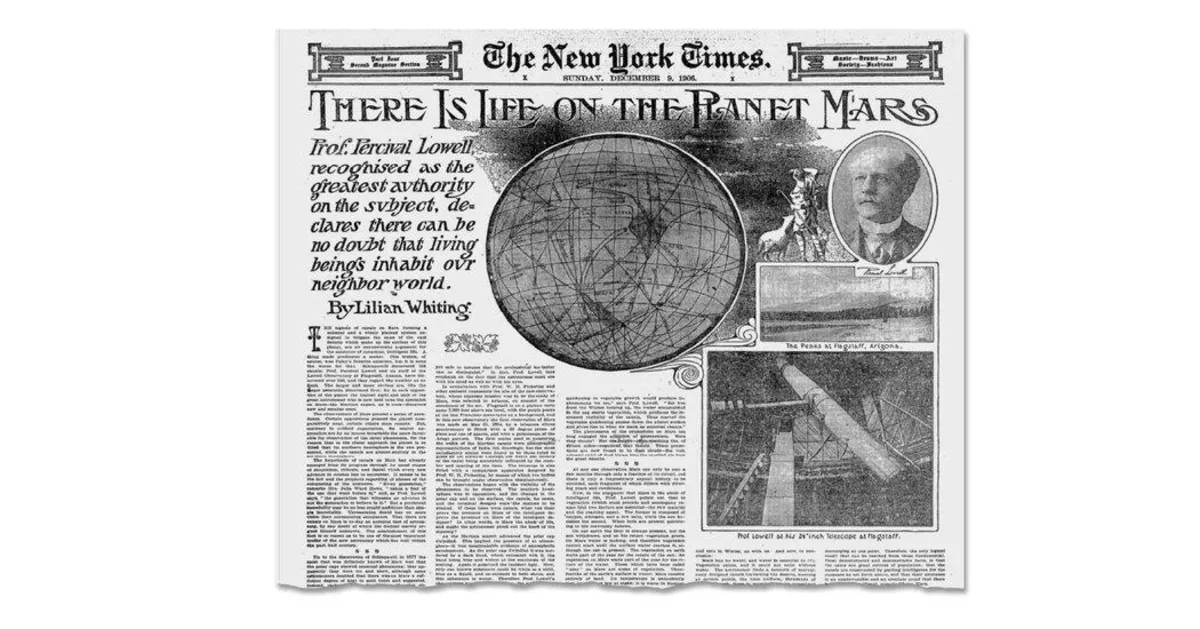
In his captivating book, The Martians: The True Story of an Alien Craze that Captured Turn-of-the-Century America, author David Baron delves into a historical phenomenon that gripped the United States at the turn of the 20th century. This era was marked by an insatiable curiosity about the red planet, fueled by the scientific advancements and imaginative narratives that surrounded it. With figures like Marvin the Martian from Looney Tunes and the ambitious aspirations of today’s richest man, Elon Musk, to colonize Mars, it’s evident that our fascination with the planet continues to thrive.
The allure of Mars, known for its frigid temperatures and desolate landscapes, has captivated humanity for generations. NASA's ongoing exploration efforts, including the deployment of robots and upcoming astronaut missions, underscore the enduring intrigue surrounding the planet. Yet, Baron’s book shifts focus from contemporary aspirations to the origins of Mars mania in America, providing a unique lens through which to view this historic obsession.
Baron’s narrative is set against the backdrop of the Gilded Age, a time characterized by rapid industrialization and cultural shifts. The excitement around Mars was not merely scientific; it permeated American society, influencing everything from Broadway shows to advertising. The vibrant depictions of Martians appeared in soap and liquor ads, captivating the imaginations of the public and leading to sensational coverage in the yellow press and established publications like The New York Times and The Wall Street Journal.
At the heart of this story is Percival Lowell, a prominent New England textile heir whose obsessions with Mars would spark a fervor of interest. Known for his eccentricities, including a penchant for sketching Martian landscapes, Lowell believed he had discovered evidence of advanced civilizations on the red planet. His theories drew upon the observations of Italian astronomer Giovanni Schiaparelli, who had identified channels on Mars that were mistakenly interpreted as artificial canals by the English-speaking press.
Lowell's visions of Martians as sophisticated beings, reminiscent of Algerians, fueled public imagination and ignited debates among astronomers. Despite skepticism from other scientists, figures like Camille Flammarion embraced the possibility of extraterrestrial communication, further amplifying the fascination with Mars. Baron elegantly captures this dynamic, illustrating how the quest for knowledge can often blur the lines between insight and delusion.
The narrative also introduces readers to the intriguing couple, David and Mabel Todd, who were deeply involved in early astronomical pursuits. Their adventures, including a trip to Chile to observe Mars, are filled with vivid anecdotes that bring to life the excitement of this era. As they celebrated Independence Day by dancing and drinking, the Todds epitomized the spirit of exploration that defined the time.
Baron’s exploration of this historical moment raises pertinent questions about our ambitions in space and their implications for life on Earth. As we marvel at the cosmos, we must also consider how such pursuits can distract from pressing issues at home. Through meticulous research and engaging storytelling, The Martians reveals the complexities of human curiosity and ambition, reminding us that within the fog of exploration, discerning truth from delusion remains a challenging endeavor.
David Baron’s The Martians is an enlightening journey into a time when America was captivated by the possibility of life beyond Earth. With its rich historical context, intriguing characters, and critical reflections on human aspirations, this book is not only a story of an alien craze but also a poignant reminder of our enduring fascination with the universe. As we continue to look towards Mars, Baron's work compels us to reflect on our past while contemplating the future of space exploration.